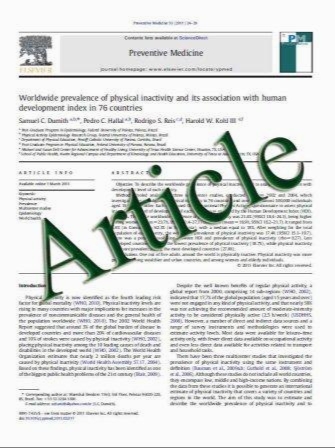Serum and synovial fluid levels of interleukin-17 in correlation with disease activity in patients with RA
- نوع فایل : کتاب
- زبان : انگلیسی
- مؤلف : Siham Ali Metawi & Doaa Abbas & Manal Mohamed Kamal & Maha Khalil Ibrahim
- چاپ و سال / کشور: 2011
Description
The aim of this study was to evaluate serum and synovial levels of IL-17A by ELISA in rheumatoid arthritis (RA) and find out the correlations between IL-17A levels and various clinical, laboratory parameters and RA disease activity and severity indices. Group I consists of 30 adult active RA patients fulfilling the ARA 1987 revised criteria, with knee effusion and receiving basic therapy, and with a mean age of 41.47±11.49 years and mean disease duration of 9.5±4.16 years. Group II consisted of 13 healthy volunteers, age- and sex-matched, with a mean age of 39.08±14.19 years. RA patients showed significantly higher mean serum IL-17A levels than controls (11.25± 9.67 vs. 0.6±1.4 pg/mL, respectively, p=0.0002). Synovial IL-17A levels showed a significant positive correlation with serum IL-17A levels (r=0.5 and p=0.005). RA patients with negative rheumatoid factor (RF) had non-significantly higher mean serum IL-17A levels (12±9.86 pg/mL) compared to those with positive RF (10.82±9.81 pg/mL); however, the mean synovial IL-17A levels were nearly the same. Significant positive correlations were found between both serum and synovial IL-17A levels and DAS-28 scores (r=0.556, 0.392 and p=0.001, 0.032, respectively). RA patients with class III functional status showed significantly higher mean serum IL-17A levels (17.53±13.43 pg/mL) than classes I and II (8.97±6.97 pg/mL, p=0.009). These led us to conclude that the elevated serum and synovial IL- 17A levels in RA patients parallel the degree of disease activity and severity. This may highlight the usefulness of IL-17 (especially serum level) as a possible marker for more aggressive joint involvement and damage.
Clin Rheumatol Received: 16 August 2010 / Revised: 22 February 2011 / Accepted: 11 March 2011


